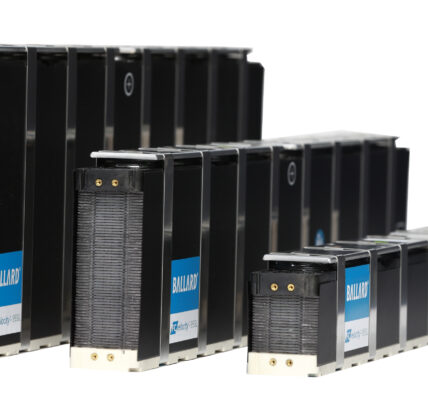Electric vehicles were the story of the year throughout 2020, but a battle in the EV industry could bust the market wide open in 2021. While Tesla was the one grabbing headlines in the United States, with over 700% gains in 2020…A Chinese competitor most folks have never heard of was already showing up Elon Musk’s EV juggernaut.
Nio, “the Chinese Tesla,” has rolled out over 75,000 electric vehicles to date. And with their ET7 electric car boasting a record range of 621 miles on one charge that’s over 200 miles farther than you can make it in a Tesla Model S.
With the Chinese government pumping billions into the economy to support the EV markets…There are now more than 400 Chinese companies all working to grab market share in this booming industry. That’s helped push China ahead of the U.S. in a heated battle which could have implications far greater than just in the EV market. That’s why the Washington Post says, “The next China trade battle could be over electric cars.”
Now, with Biden officially in office, he’s made it clear that EVs and green initiatives are a top priority. One of his first actions on Day 1 was to rejoin the Paris Climate Agreement, the international agreement focused on global warming and reducing carbon emissions. Biden has also called climate change “the number one issue facing humanity.” That’s why his campaign website has emphasized plans to speed up the rollout of EVs with big tax incentives and government funding.
There’s only one problem: most Americans have been slow on the uptake. A US Automotive study showed that while many Americans are interested in environmentally-friendly vehicles, most weren’t willing to pay for it. But one Canadian company saw this mega-trend coming years ago. And they are an example of the kind of North American companies that could help bridge the gap and give everyday folks the EV experience whenever they need a ride.
Facedrive, the eco-friendly ridesharing company inked a number of major partnerships and deals over the last year. Even with lockdowns hurting many in the ridesharing industry, Facedrive managed to grow their business through creative moves and acquisitions. That’s why Facedrive’s shares have surged upwards a massive 834% in the last year.
Their ridesharing model is simple. Whenever customers hitch a ride with Facedrive, they have the choice to ride in an eco-friendly EV, hybrid or a standard gas-powered car.
Then after arriving at their final destination, Facedrive sets aside a portion of the fare to plant trees, offsetting the carbon footprint from the ride. In other words, you ride, they plant a tree.
Through next-gen technology and partnerships, they’re giving their customers the option to make a more eco-friendly choice if they choose. And it’s this sort of smooth transition into everyday EV use that could help get Americans accustomed to these futuristic vehicles…A shining example of company innovation that might give the United States just the boost it needs to edge out China for the lion’s share of this projected $802 billion market.
The Next Wave of Electric Vehicles
The future of the electric vehicle trend goes far beyond just four-door sedans though. But to date, China has absolutely crushed the United States in the medium- to heavy-duty truck range.
Between 2010 and 2019, China sold over 6,000 electric trucks. The U.S. and Europe together managed only a measly 222. But American EV companies and other major corporations are rushing onto the scene to change this in 2021.
GM recently made news when they announced the launch of BrightDrop, an integrated ecosystem of electric first-to-last-mile products, software, and services. And FedEx has already signed on to partner up, with GM planning to help them deliver packages with EVs and other electric products by later this year.
Even with all the attention the EV market has gained recently, it may still sound like futuristic tech still years down the line to some. But the truth is EV delivery trucks are already up and running.
Facedrive (FD,FDVRF) has managed to work their way into the delivery game as well – taking over some of the food delivery business in Canada of the worldwide projected $154 billion food delivery industry. They would be a prime candidate to add EV trucks to their fleet in future, considering their mantra is “people and planet first”.
In May, they acquired Foodora Canada, a subsidiary company of the $20-billion multinational food delivery service, Delivery Hero, operating in 40 countries and servicing more than 500,000 restaurants. Then a few months later, they acquired Food HWY, a leading “ethnic and student focused” food delivery service, which added thousands more restaurants and tens of thousands of users to their service.
They’re now delivering over 4,100 orders per day on average. And after growing to 19 major cities, they plan to expand to more cities throughout the U.S. and Canada soon.
Plus, they recently acquired the electric vehicle subscription services company, Steer, from the largest clean energy producer in the United States. Steer’s subscription model for EV cars is putting a major twist on the traditional car ownership model.
So while some have been slow to buy an EV of their own…With Steer, customers are able to try out an assortment of them with a simple monthly service fee like Netflix. Now Facedrive is helping Americans to dip their toes into the next generation of transportation, both with carbon-offset ridesharing and a try-before-you-buy model.
The EV Boom Is Just Getting Started
Tesla was among the biggest market stories of 2020 with incredible gains of over 700%. This helped them become one of the highest-valued stocks in the United States with other Big Tech giants.
After a much-touted Battery Day event and expectations of Musk developing a “Million Mile Battery” in the near future, Tesla recently joined the S&P 500.
Nio Limited is Tesla’s biggest competitor, dominating the Chinese EV markets. After a rough start after going public in 2018, it’s been on a tear, producing vehicles with record-breaking range.
Just a year ago, no one could have imagined how successful the Nio was going to be. In fact, many shareholders were ready to write off their losses and give up on the company. But China’s answer to Tesla’s dominance powered on, eclipsed estimates, and most importantly, kept its balance sheet in line. And it’s paid off. In a big way. The company has seen its share price soar from $3.24 at the start of 2020 to a high of $61 this month, representing a massive 1600% returns for investors who held strong.
In November, NIO unveiled a pair of vehicles that would make even the biggest Tesla devotees truly contemplate their brand loyalty. The vehicles, meant to compete with Tesla’s Model 3, could be exactly what the company needs to take control of its domestic market.
By NIO’s fourth quarter report in October, the company announced that its sales had more-than doubled, projecting even greater sales in 2021. The EV up-and-comer has shocked investors and pulled itself back after its rumored potential bankruptcy in 2019, and if this year shows investors anything, it’s that its CEO William Li is as skilled and ambitious as anyone in the business.
Li Auto is another up-and-comer in the Chinese electric vehicle space. And while it may not be a veteran in the market like Tesla or even NIO, it’s quickly making waves on Wall Street. Backed by Chinese giants Meituan and Bytedance, Li has taken a different approach to the electric vehicle market. Instead of opting for pure-electric cars, it is giving consumers a choice with its stylish crossover hybrid SUV. This popular vehicle can be powered with gasoline or electricity, taking the edge off drivers who may not have a charging station or a gas station nearby.
Though it just hit the NASDAQ in July of last year, the company has already seen its stock price more than double. Especially in the past month during the massive EV runup that netted investors triple digit returns. It’s already worth more than $30 billion but it’s just getting started. And as the EV boom accelerates into high-gear, the sky is the limit for Li and its competitors.
General Motors is one of the legacy automakers benefiting from a shift from gas-powered to EV technology. It’s now well over 100 years old and has survived where many others have failed. Even with the downfall of Detroit, GM has persisted, and that’s due in large part to its ability to adapt. In fact, GM’s dive into alternative fuels began way back in 1966 when it produced the world’s first ever hydrogen powered van. And it has not stopped innovating, either.
With the news of GM’s new business unit, BrightDrop, they plan to sell electric vans and services to commercial delivery companies, disrupting the market for delivery logistics.
And in January 2021, the giant automaker announced that it will discontinue production of all gas-powered vehicles, including hybrids, by 2035. This is a key factor in its commitment to become carbon-net zero by 2040.
Ford is another Detroit automaker making the jump to EVs – and seeing shares jump in the process. They recently announced they’ll be boosting their spending on EVs to $27 billion through mid-decade.
That big investment includes plans of their own to develop an electric cargo van and a plug-in version of their bestseller F-150 pickup truck. And this is just the beginning for the heavyweight automaker.
The most exciting electric vehicle in its arsenal, however, may just be its brand-new Mach-E Mustang. The affordable electric take on the company’s iconic sportscar lives up to its name. The eye-popping nu-classic can go from 0-60 in just 3.5 seconds, with a range of approximately 300 miles per charge. It even has new tech including Active Drive Assist allowing drivers to operate the Mustang Mach-E hands-free.
In addition to its all-electric array of vehicles, Ford is also on the cutting edge of other alternative fuels, including natural gas and hydrogen powered vehicles.
Blink Charging was one of the darlings of the EV boom throughout 2020 because of its expansion in EV charging technology. Blink is building an EV charging network that may be small right now, but it’s got explosive growth potential that is as big as the EV market itself.
This stock is on a major tear and all that cash flowing into it right now gives Blink the superpower to acquire and expand. A wave of new deals, including a collaboration with EnerSys and another with Envoy Technologies to deploy electric vehicles and charging stations adds further support to the bullish case for Blink.
Michael D. Farkas, Founder, CEO and Executive Chairman of Blink noted, “This is an exciting collaboration with EnerSys because it combines the industry-leading technologies of our two companies to provide user-friendly, high powered, next-generation charging alternatives. We are continuously innovating our product offerings to provide more efficient and convenient charging options to the growing community of EV drivers.”








